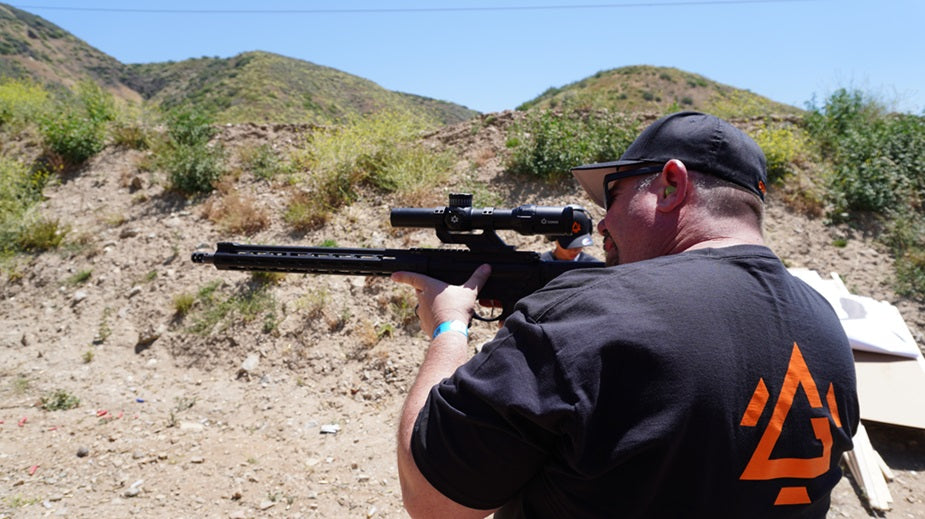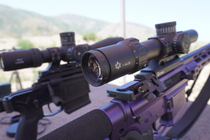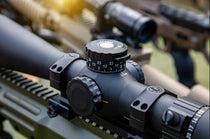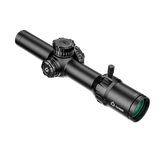MAXIMIZING YOUR LPVO PERFORMANCE: WHY ROUTINE MAINTENANCE AND PROPER IS ESSENTIAL
When you spend hundreds (or thousands) of dollars on your LPVO, it is natural to expect optimal performance every time you pick it up. However, like with all optics, how well your LPVO performs will depend largely on the extent to which you maintain it and how familiar you are with using the scope in different scenarios. Let’s explore some routine maintenance steps you can carry out to ensure that your scope is always ready and how consistent practice can help enhance your experience of using an LPVO.
PART ONE: SOME ROUTINE MAINTENANCE STEPS
An effective way to prevent your scope from failing at a crucial moment is by routinely checking and carrying out maintenance. Here are some maintenance routines that would be beneficial for you to adopt.
ALWAYS CLEAN, PROTECT AND CHECK FOR DAMAGES
Clean the Lenses Regularly
Your ability to identify and engage any target clearly depends mainly on the cleanliness of the lens on your LPVO. Make sure you regularly clean off any dirt, dust, moisture, or smudges that might have accumulated on the lens, obscuring your view and reducing the effectiveness of your optic. Shooters use a microfiber cloth and an accurate lens cleaner for maximum cleaning performance.
Adopt Protective Measures
The lens of your LPVO needs to be protected even while it is not being used. There is always the risk of the lens getting scratched or environmental debris, even while it is tucked up in the garage. Before storage, make sure the lens cover is on and your lens is protected. It’s also advisable to inspect and clean the covers themselves to prevent dirt from transferring to the lenses when they are flipped open.
Check for Damage
Regularly inspect your LPVO for any kind of physical damage. Any scratches, dings, or signs of wear and tear on the scope body can be an indication that something is going wrong. Perhaps you are not storing it in the right environment, or maybe your manner of handling is exposing the scope and getting it scratched. Also, make a habit of checking the reticle to make sure it is functioning correctly and that any illumination features are working as expected. By catching these little problems, you can prevent more costly issues in the future.
ALWAYS SECURE AND MAINTAIN ZERO
Reconfirming Zero
The importance of regularly confirming that your LPVO is still zeroed cannot be overemphasized. As you continuously use and transport it from place to place, the optic may gradually shift over time. This happens even when you encounter minor bumps that cause the optic to jerk or move suddenly. Taking your rifle to the range and confirming zero should definitely be a scheduled event on your calendar. If you are involved in hunting trips or competitions, make sure zeroing is a crucial part of your preparation process as well.
Torque and Tightness
Regularly check the mounting screws and rings to ensure they are properly torqued and secure. Loose mounts can cause the zero to shift and affect accuracy. Invest in a torque wrench specifically designed for firearm optics, and always ensure that all screws are tightened to the manufacturer’s specifications. Take care not to over-tighten either as that could damage the optic or rifle.
PROPER BATTERY MANAGEMENT
Check and Replacing Batteries whenever Necessary
If your LPVO has an illuminated reticle, battery management must be an essential part of your maintenance routine. The thing about batteries is, they lose charge even when your scope is not in use. If you do not check and replace them regularly, you might end up getting caught without power during a crucial moment. So, check and replace your batteries regularly, and always carry a spare.
Check and Prevent Corrosion
Batteries become corroded, especially if exposed to moisture. A corroded battery is a huge disadvantage because it does not immediately stop working; rather, it sparks to life one moment and dies down the next. This irregularity can then be reflected in the performance of the illumination feature on your LPVO. Cleaning the contacts with a cotton swab and a small amount of rubbing alcohol can prevent corrosion and ensure a solid connection.
THE ENVIRONMENTAL MATTERS
Waterproofing and Sealing
Many LPVOs are already designed to be waterproof and fog-proof. However, it is still important to regularly check the seals and O-rings. Seals can degrade over time, and this will leave your optic more vulnerable to moisture and fog. If you frequently hunt in wet or humid environments, your LPVO could be at perpetual risk. If you notice any damaged or worn seals, have the optic serviced by a professional to restore its waterproofing.
Temperature and Storage
Any kind of extreme temperature can affect the performance of your LPVO. For example, in extreme cold, the internal lubricants could start to thicken, potentially affecting the smoothness of the magnification ring or turrets. Excessive heat is equally destructive: it can cause internal components to expand, leading to a loss of zero.
So, watch where you store your LPVO. The ideal storage area would be a controlled environment, neither too hot nor too cold. If you’re hunting in extreme conditions, allow the optic to acclimate gradually to the temperature before use.
PART TWO: CONSISTENT PRACTICE
BECOME FAMILIAR WITH THE LPVO
Build familiarity with your Optic
No amount of maintenance can replace the value of consistent practice. You want to become familiar with the magnification ring, reticle, parallax adjustment (if applicable), and other features of your LPVO as quickly as possible. The best way to achieve that is by regularly using your LPVO in various shooting scenarios. The more you practice, the more intuitive these adjustments will become, allowing you to react quickly and accurately in the field.
Practice with Magnification Settings
One of the key advantages of an LPVO is its variable magnification. However, it takes a measure of dexterity to be able to quickly switch between different magnification settings. To build this dexterity, you need to practice a lot. Spend time at the range practicing with both the lowest and highest magnification settings, as well as intermediate levels. This helps you understand how your reticle behaves at different magnifications and how to best utilize the optic for various shooting distances.
Shoot in Different Positions
When hunting, or in tactical situations, you might find yourself having to shoot from unconventional positions: possibly kneeling, prone, or from behind cover. Practicing these positions with your LPVO will help you understand how optics perform in real-world conditions. It also helps you become comfortable with maintaining proper eye relief and cheek weld in various shooting stances, building up your consistency and accuracy.
Simulate Field Conditions
Another ingenious way to become more adept with your LPVO is to simulate the conditions you expect to encounter in the field during practice sessions. Practice on an uneven terrain, in low light, or set a time limit for yourself. By recreating these scenarios, you can identify any challenges or limitations of your LPVO setup and address them before they become an issue during an actual hunt.
BUILDING MUSCLE MEMORY
Quick Target Acquisition
One of the primary advantages of an LPVO is its ability to facilitate quick target acquisition at low magnification while still providing precision at higher magnification. Building muscle memory through repetitive practice helps you smoothly transition between these magnification levels without hesitation. Whether you’re tracking a moving target or taking a precise long-range shot, having this muscle memory ensures that you can operate the optic instinctively and effectively.
Transition Drills
Incorporating transition drills into your practice routine, such as switching between multiple targets or moving from a close-quarters shot to a distant one, can enhance your proficiency with the LPVO. These drills teach you to make rapid adjustments to magnification and reticle placement, ensuring you’re prepared for any situation that may arise in the field.
RECOMMENDED: GUNNR SCOPES
While maintenance and practice are crucial, it does help to begin with a top-quality gun scope. Gunnr has just launched a new brand of gun scopes, and they are generating all the excitement. The Odin, one of Gunnr’s flagship products is made from durable 7075 aluminum alloy with a first focal plane (FFP) reticle that provides fast, accurate distance estimation at any magnification, adapting seamlessly to changing light conditions with six brightness settings. Check out the Gunnr Odin if you want to be equipped with a versatile tool designed to enhance your shooting experience and leave you wondering how you ever aimed without it.
CONCLUSION
By taking the time to clean, inspect, and maintain your optic, you ensure its reliability and longevity. Additionally, regular practice builds familiarity with the optic’s features and enhances your ability to use it effectively in various hunting and shooting scenarios. With proper routine maintenance and consistent practice, you can be sure to get the best out of your LPVO.
For hunters and shooters who rely on their LPVOs to perform at a high level, neglecting maintenance or skipping practice can lead to missed opportunities or, worse, failed equipment in critical moments. By integrating these practices into your routine, you can maximize your LPVO’s potential and ensure that it remains a trusted tool in your shooting arsenal.







